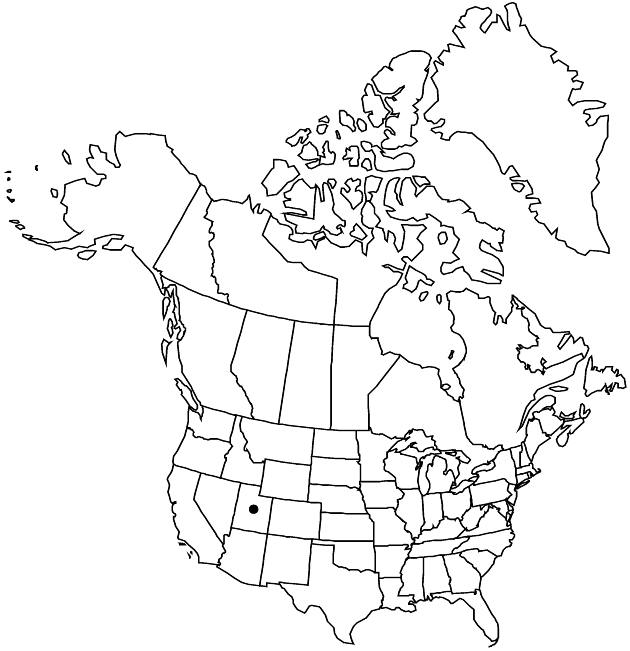Herrickia kingii var. kingii
Treatment appears in FNA Volume 20. Treatment on page 362.
Leaves entire. Ray-florets white to pale lavender. 2n = 18.
Phenology: Flowering summer–early fall.
Habitat: Rocky slopes and cliff crevices of mountains in subalpine coniferous forests, douglas fir-white fir, mountain brush and cottonwood communities, on calcareous or granitic substrates
Elevation: 1700–3300 m
Discussion
Variety kingii is known only from the Wasatch Mountains, from Mt. Nebo northwards (Juab, Millard, and Salt Lake counties).
Selected References
None.
Lower Taxa
None.
"thick" is not a number."full" is not a number."[" is not declared as a valid unit of measurement for this property."]" is not declared as a valid unit of measurement for this property.
... more about "Herrickia kingii var. kingii"
introrse +
connate +
distinct +
herbaceous +
acute;long-acuminate +
hirsute +
papillate +
corymbiform +
continuous +
sheathing +
attenuate +
indurate +
1-nerved +
oblanceolate;spatulate +
reduced +
firm +
ribbed +
stigmatic +
barbellate +
yellowish +
persistent +
35;70 +
unequal +
absent +
branched +
woody +
absent +
ampliate +
8-10-nerved +
brown +
dimorphic +
2.5mm;3.5mm +
staminate +
reduced +
0;1/6 +
Utah. +
straight +
eglandular +
scabrellous +
distinct +
proximal +
1;5 +
bisexual +
dispersed +
Rocky slopes and cliff crevices of mountains in subalpine coniferous forests, douglas fir-white fir, mountain brush and cottonwood communities, on calcareous or granitic substrates +
indeterminate +
1;5 +
surrounding +
hemispheric-campanulate +
entire +
alternate +
marcescent +
erect;spreading +
lanceolate +
? - ? +
scarious +
2-carpellate +
inferior +
attached +
anatropous +
persistent +
stipitate-glandular +
tough +
thick +
absent +
connate +
1-nerved +
purplish +
persistent +
distinct +
falling +
unequal +
Sida +
2004 +
pistillate +
absent +
fertile +
epaleate +
pitted +
flat;slightly convex +
fibrous +
exalbuminous +
modifed +
4;5 +
Endemic +
alternate +
erect +
long-stipitate-glandular +
scabridulous +
lanceolate +
2-branched +
glabrous +
Herrickia kingii var. kingii +
Herrickia kingii +
variety +
spinulose +
apiculate to more +
slightly longer +
maturity +
perennial +
cespitose +
dwarf +
subshrub +
foliaceous +
truncate +
green +
1/2;2/3 +
